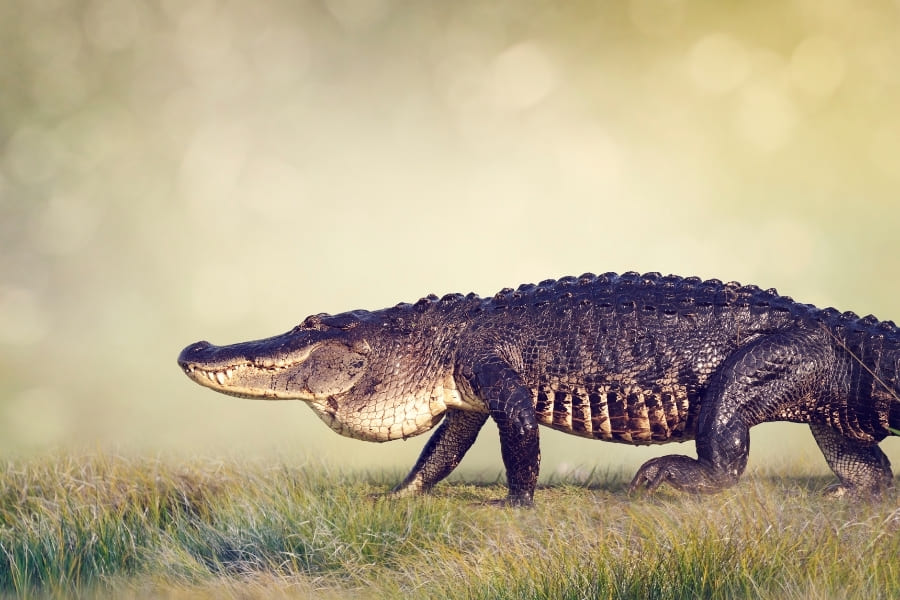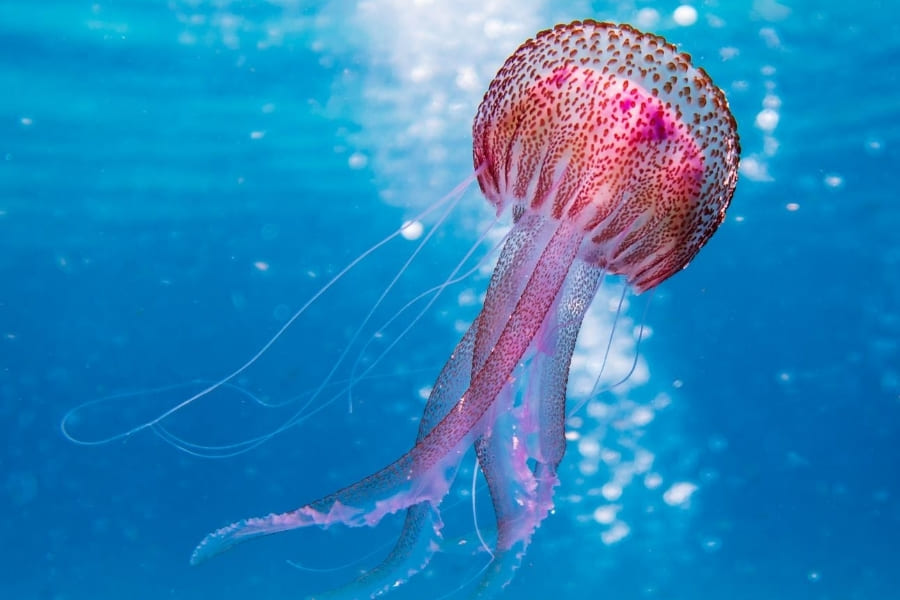Immortalized by the heroes Crush and Squirt from “Finding Nemo”, turtles have long ranked among the most popular animals – and among the most successful: These reptiles with the iconic shell have conquered numerous habitats: from rivers, lakes and swamps to the open oceans.
In many places, turtles can only be seen in captivity – not so in Florida. The Sunshine State is home to numerous species on water and on land. Not only adult specimen can be spotted here. Every year, thousands of females lay their eggs on Florida´s beaches – a remarkable sight for everybody lucky enough to behold it.
In this article, you will learn what makes Florida’s turtles so special, where to best see them in the wild, and which zoos and aquariums harbor the iconic animals. In addition, we will shed light on the perfect travel time for turtle lovers.
Turtles Facts
The turtle family is far from a homogenous group. Instead, scientists have identified a whopping 350 species that differ significantly in physique, behavior and habitat. Here are some of the most important facts about turtles:
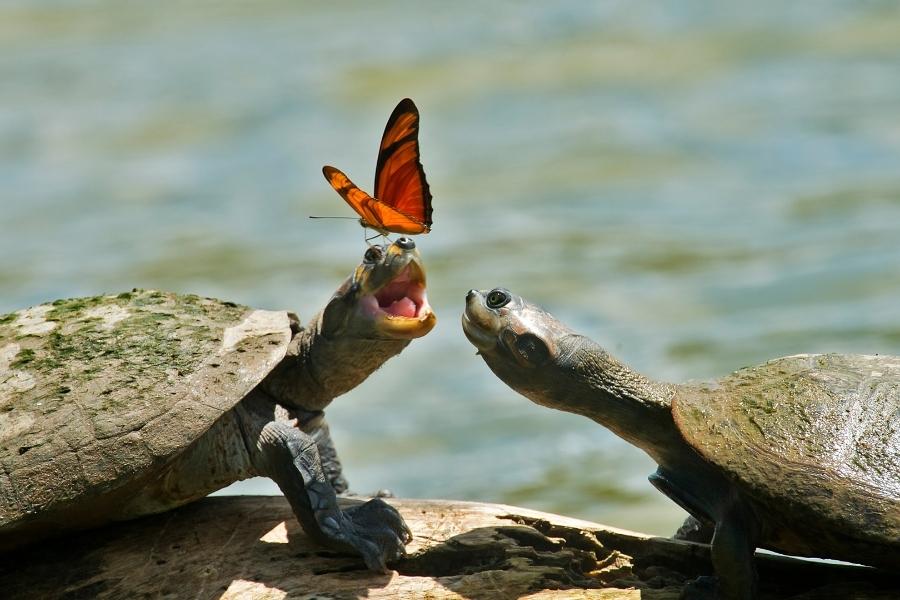
Evolution
Turtles have been populating our planet for 220 million years, which makes them one of the oldest vertebrates. It is believed that tortoises emerged much earlier than their aquatic brethren. The largest turtle ever found measured a whole 13 feet, and its skeleton has been dated to 70 million years before our time.
Did you know? Prehistoric turtles used to have clearly visible teeth – unlike today´s species that process their food with beak-like jaws.
Species and Habitats
More than 30 species of turtles call the Sunshine State their home. Most of them are aquatic and live in fresh or salt water. These species include loggerhead, leatherback, and green sea turtles that are found offshore — as well as the swamp-dwelling Florida red-bellied turtle. In addition, there are several species of tortoises in Florida: including the box turtle, the snapping turtle and the gopher tortoise that weighs up to 12 pounds.
Characteristics
- The most characteristic feature of turtles is their shell, which is firmly attached to the skeleton, grows with the animal and offers protection from predators.
- Turtles have sharp eyes, with which they can distinguish colors much better than humans.
- Their sense of smell is well developed, too. This way, they cannot only detect food and mates over long distances. Sea turtles also use smells for orientation. In addition, these aquatic nomads cover thousands of miles and navigate with the help of the Earth’s magnetic field.
- Hearing, on the other hand, is not a strength of turtles. They react mostly to dull noises such as approaching steps.
- Turtles are famous for their long lifespan. 75 years or more is not uncommon for wild specimens, and the oldest turtle ever found was estimated to be 176 years old.
- Despite their slow appearance, turtles are anything but stupid: They have a good memory, problem-solving skills, and can even be trained to a certain extent.
Diet
Most turtle species are not picky about their food. Small animals such as snails, insects, crabs and jellyfish are just as much part of their diet as plants, algae and fruits. Tortoises are known for their vegetarian lifestyle, while freshwater and sea turtles do not disdain meat and carrion.

Mating, Breeding Season and Baby Turtles
Turtles are loners that come together only for mating. After the male has fertilized the female, all turtles – including aquatic species – must come on land in order to lay their eggs.
While tortoises pile up a mound for this purpose, sea turtles always lay their eggs on the same beach where they hatched themselves. To reach their birthplaces, the animals can travel thousands of miles. After about 2 to 3 months, the young turtles hatch and instinctively make their way from the beach into the water.
At this point, the little turtles are completely on their own – and they have many predators: from raccoons, birds and crabs to large fish. Not surprisingly, only one in 1000 sea turtles reaches adulthood.
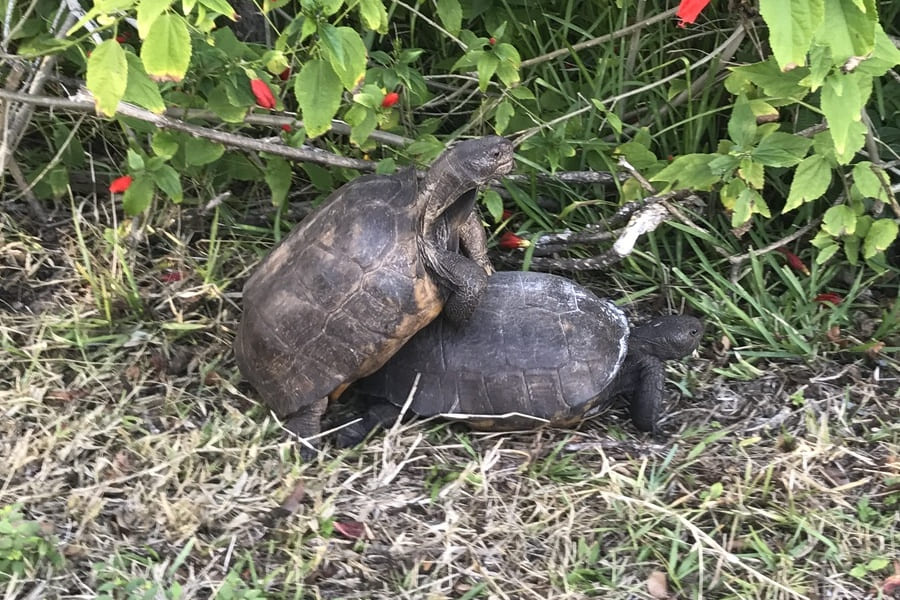
Endangerment and Protection
All 6 species of Florida´s sea turtles as well as the gopher tortoise are considered endangered or even threatened with extinction. This is not only due to the pollution of coastal waters. In recent times, more and more beaches and swamp areas have been claimed by humans, so the animals cannot lay their eggs anymore. For this reason, all turtle nests in Florida are protected today, and the capture of wild turtles is strictly regulated.
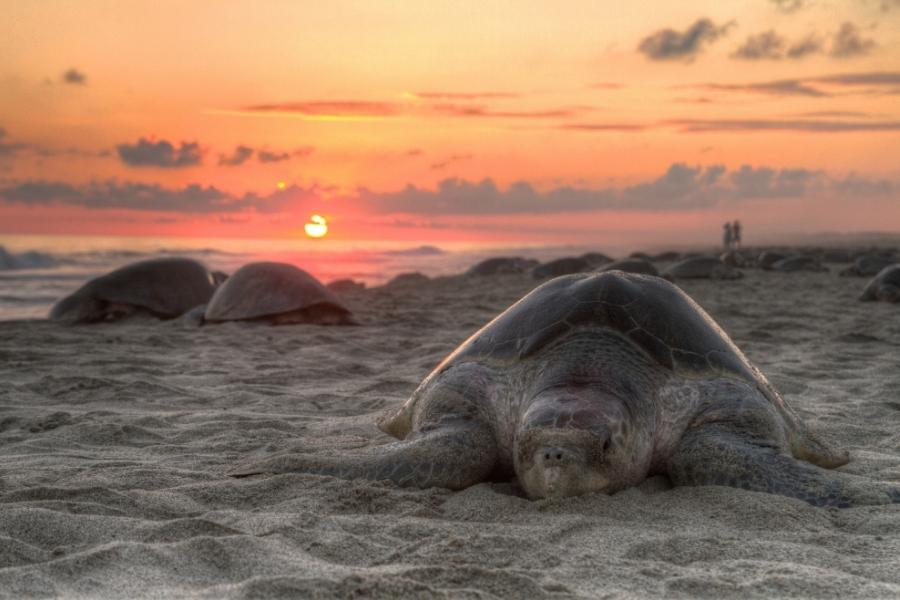
Turtle Watching in Florida – the best Places
A long coastline, countless bodies of water and a warm climate make Florida the perfect place to spot turtles in the USA.
In Captivity
If you do not want to go on hiking or boat trips, we recommend the following places to see turtles in captivity.
Rescue Centers
Turtles are exposed to many dangers. Luckily, there are facilities in Florida where injured specimens are nursed back to health. One of them is the Turtle Hospital in Marathon (Florida Keys).
The hospital is open to visitors. On a guided tour, you will get close to the turtles swimming in their pools and learn more about the efforts of the conservationists. A definite highlight for visitors is the moment when turtles are released back into the wild.
The Loggerhead Marinelife Center in Juno Beach also takes care of injured specimens. In addition, important research is done here – no wonder, as the center overlooks one of the most important turtle beaches in Florida. During the summer months, tours to the nests are offered, and in winter, you can learn more about the veterinarians´ work.
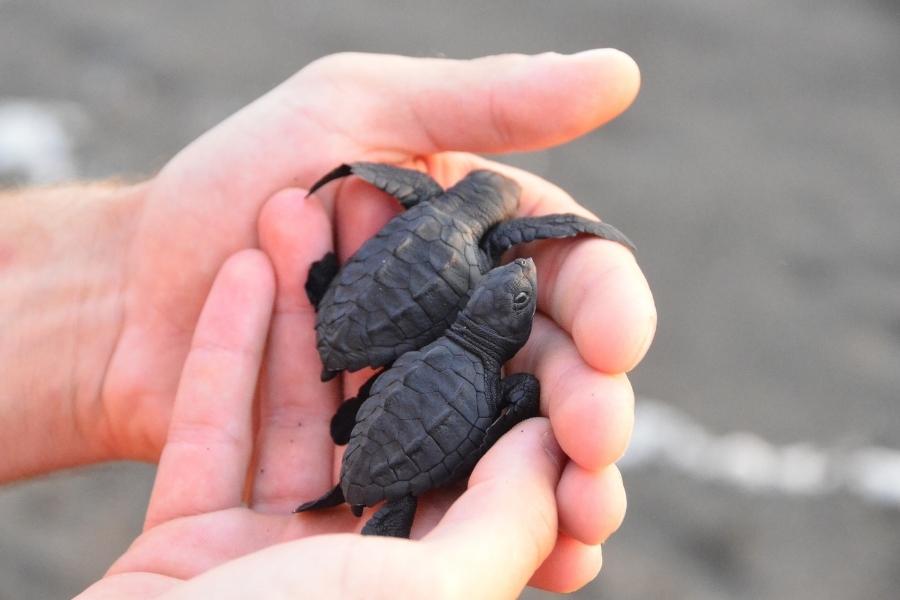
Zoos and Aquariums
Turtles are a major attraction at the following zoos and aquariums in Florida:
- At Tampa’s Lowry Park Zoo, you can see North American species and feed giant tortoises.
- The Florida Aquarium in Tampa is home to Madagascar turtles and green sea turtles that you can snorkel with in a tank.
- The Miami Seaquarium operates a rescue center for injured sea turtles.
- Naples Zoo is home to three species of turtles: gopher tortoises, leopard tortoises and the colorful red-dotted tortoise.
- Sea World, Orlando offers a special animal encounter: Here, you can climb into an underwater cage to feed turtles, rays and sharks.
- At Disney World, the armored reptiles populate the aquarium “The Seas with Nemo & Friends at Epcot”, where you can admire them while snorkeling in the tank.
- At the Fort Myers Butterfly Estates, colorful pollinators are the main attraction. However, the ponds of this greenhouse also feature a number of turtles.
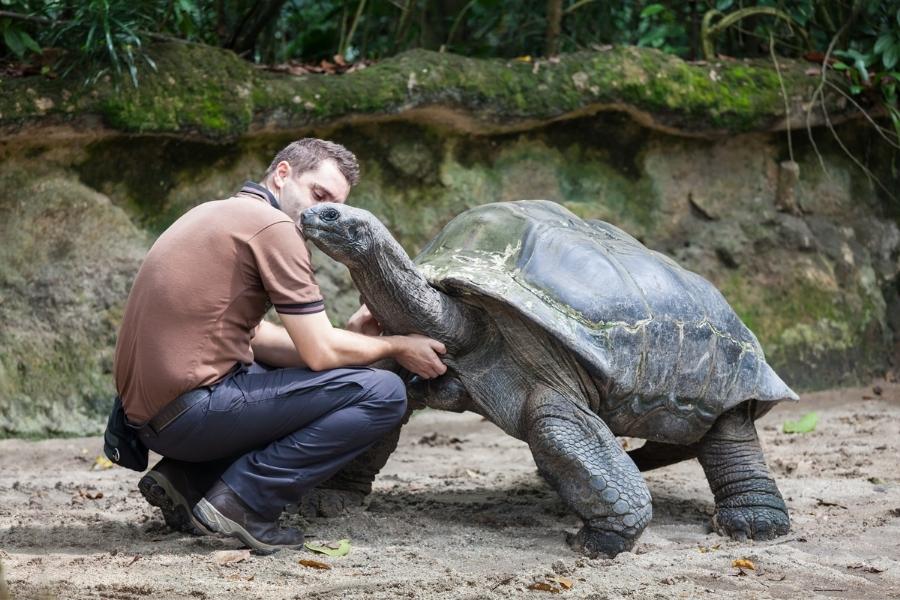
In the Wild
Turtles and tortoises can also be observed in the wild – be it in Florida´s wetlands, on the coast or in coral reefs. While adult turtles stay here all year round, the best time to see young ones is the summer, when the females return to lay their eggs.
Melbourne Beach
This city on Florida´s east coast is one of the best places to spot sea turtles. With recent conservation attempts bearing fruit, loggerhead, leatherback and green sea turtles now come here in increasing numbers to lay their eggs.
A particularly worth-while spot for observations is the Archie Carr National Wildlife Refuge that stretches between Melbourne Beach and Wabasso. Guided tours to turtle nests are also offered by the Sea Turtle Preservation Society in Indialantic, Florida.
Vero Beach
This turtle-watching hotspot is also located on the east coast of Florida. There, animal rights activists of the NGO Coastal Connections mark nests that you can visit as part of a tour. You also have the chance to watch rescued turtles getting released back into the wild.
Disney’s Vero Beach Resort has a special offer in store: On nocturnal tours with night vision goggles, participants can observe young turtles hatching from their nests. Sightings are guaranteed since the resort staff keeps a close eye on the development of the nests.
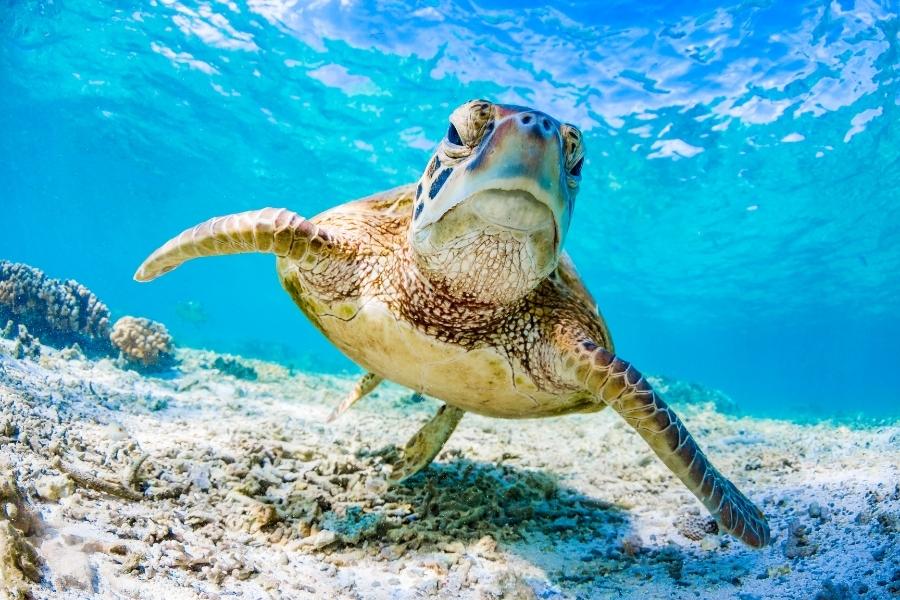
Fort Lauderdale
Both the Museum of Discovery & Science and the Anne Kolb Nature Center offer turtle watching tours. On these tours, knowledgeable guides will take you to nests where you can watch baby turtles hatch – an unforgettable experience, especially for young visitors. In addition, you will learn a lot of interesting facts about these animals.
Florida Keys
If you want to go snorkeling with five different species of turtles, there is hardly a better place than the Florida Keys.
Dry Tortugas National Park, a remote marine reserve that you can only reach by boat or as part of a tour, is particularly worth-while. Here, you can observe hawksbill, leatherback and green sea turtles, even outside the breeding season. The same is true for the Key West Reef, where adult turtles can be seen all year round.
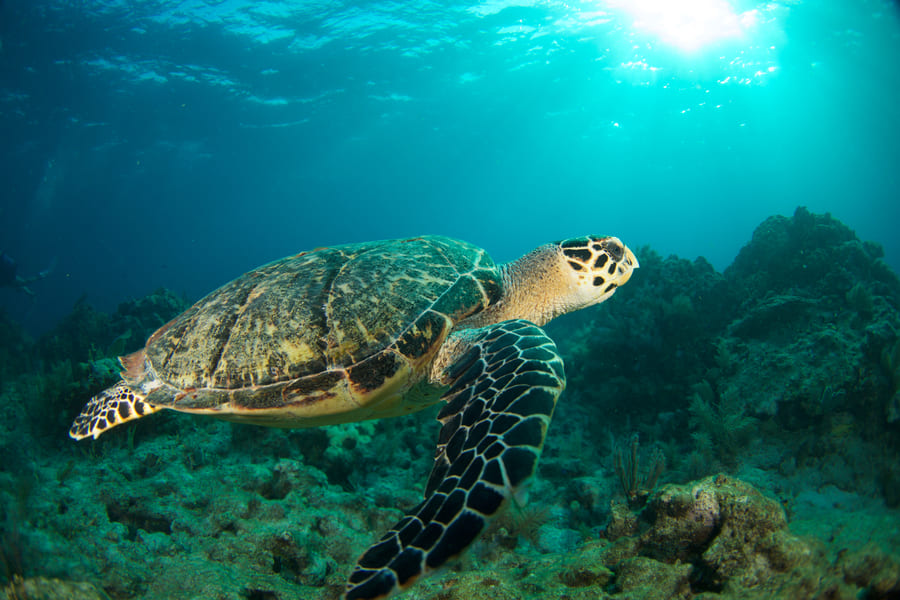
Everglades
If you want to see an abundance of turtles, Everglades National Park is the perfect place for you. Here, freshwater species such as snapping turtles, striped mud turtles and chicken turtles swim in the swampy water that you can explore on an airboat or kayak tour. Further south, the “River of Grass” merges into brackish water, and finally into seawater – a refuge for leatherback and hawksbill turtles.
General James A. Van Fleet State Trail
The Florida gopher tortoise populates all parts of the Sunshine State. For the best chances to observe this species, however, you should head for the General James A. Van Fleet State Trail stretching from Polk City to Mabel in the north. The animals prefer to stay along the path, where they feast on fresh grass. With a bit of luck, you can even see their nests and offspring between August and November.
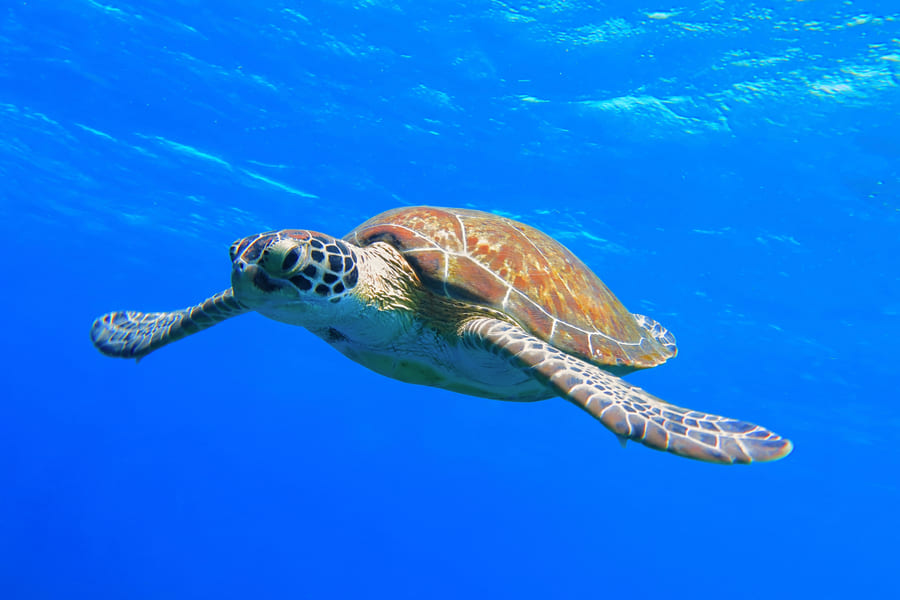
Corkscrew Swamp Sanctuary
Many of Florida’s 142 reptile species live in the Corkscrew Swamp Sanctuary with its extended boardwalk – including the eastern and western mud turtle, as well as the Florida softshell turtle with its iconic long neck. Since these cold-blooded animals need to warm up, they can often be seen sunbathing on the shores.
Cabbage Key
Even if you wouldn’t suspect it at first glance, the small island of Cabbage Key is a refuge for Florida gopher turtles. Nobody really knows how long the reptiles have been living there or where they came from. Today, however, they belong firmly to this island off Florida´s west coast. Here, they spend most of their time feeding on leaves and grass – utterly unimpressed by curious tourists.
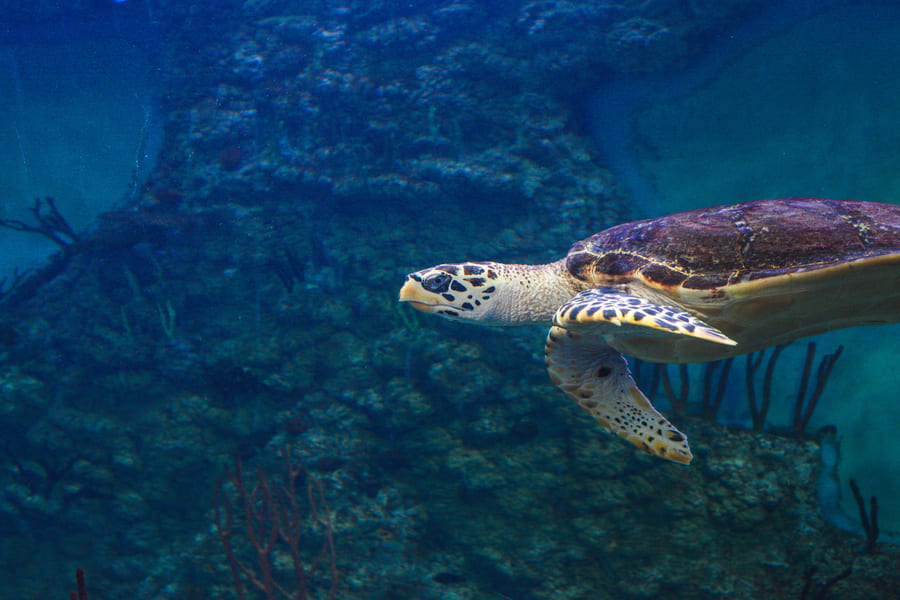
Other places where you can observe free-living turtles include:
- North Jetty Beach, Casey Key
- Lighthouse Beach, Sanibel Island
- Venice Beach, Venice
- Babcock Ranch Nature Reserve, Lee County
- Coastal strip of the Bonnet House Museum & Gardens, Fort Lauderdale.
FAQ – frequently asked Questions
What types of turtles live in Florida?
The Sunshine State is estimated to feature 30 different species. Most of them are freshwater turtles and land-dwelling tortoises, while 6 aquatic species can be found off the coast.
What do turtles eat in Florida?
Florida’s sea turtles eat mainly algae, seaweed, mussels and mollusks, while tortoises live on a plant-based diet. Freshwater species such as the snapping turtle are omnivores. Their diet includes small fish, amphibians and reptiles, but also carrion.
How old do Florida chicken turtles get?
This characteristically striped species usually lives for 30–40 years, but longer life expectancies are also possible.
When do turtles hatch in Florida?
Sea turtles lay their eggs on Florida’s beaches between March and October. About two months later, the young animals hatch. However, this is only a rough guideline, so you might also see small turtles in February or November.
Where can I swim with turtles in Florida?
In addition to dive sites in the Florida Keys, several animal parks offer encounters with turtles: among them, Tampa’s Florida Aquarium, Disney World, and SeaWorld in Orlando.




